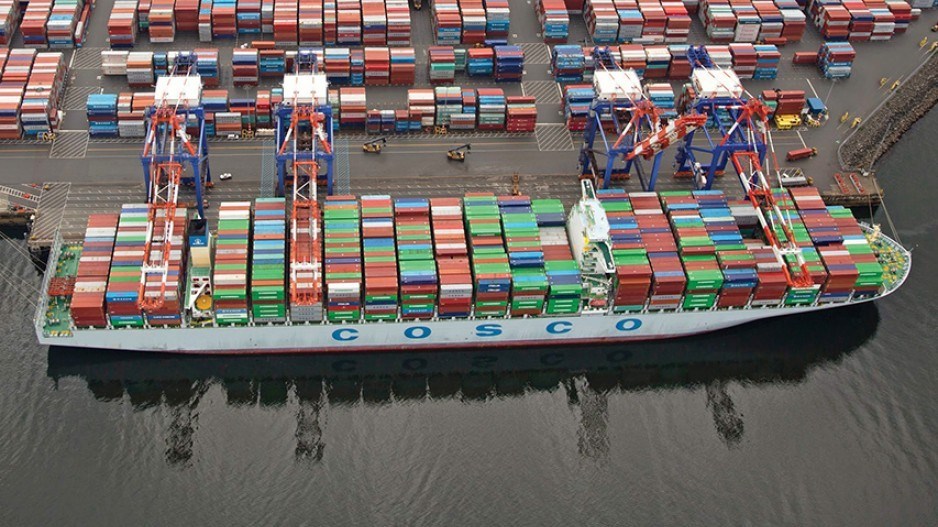Despite pandemic challenges, B.C.’s northern Prince Rupert port saw a record year for cargoes in 2020 with 32.4 million tonnes moving through the port, 9% more than in 2019.
“In a year marred by uncertainty, the Port of Prince Rupert has facilitated increased trade in support of Canada’s economic health through the pandemic enabling over $50 billion in international trade,” Prince Rupert Port Authority president Shaun Stevenson said. “Weathering the storms triggered by the COVID-19 pandemic, our port has handily proven its resiliency, efficiency and reliability as a key strategic trade gateway for Canada.”
Some 29.9 million tonnes of cargo moved through Prince Rupert in 2019, 12% more than 2018.
The 2020 increased volumes were led by a rise in coal, propane and wood pellets exports.
Significant drops were seen in logs, machinery, steel pipe, canola and oats.
Ridley Terminal saw a year-over-year increase of 26%, driven by thermal coal demand.
AltaGas’ Ridley Island Propane Export Terminal marked year one of operation in May 2020, ending the year with 1,159,207 tonnes loaded onto Asia-bound vessels.
Pinnacle Renewable Energy’s Westview Terminal exported 1,474,301 tonnes of wood pellets, an increase of 33% over 2019.
However, factory shutdowns in Asia and locked-down North American economies caused a 19% drop in container traffic in the second quarter.
However, volumes rebounded and DP World’s Fairview Container Terminal finished 6% down with 1,141,390 twenty-foot equivalent units (TEUs) moving for the year.
The decrease is attributed mostly to a decline in the volume of empty containers being shipped back to Asia.
That’s in contrast to 2019 where the terminal saw movement of 1.2 million TEUs, an increase of 17% over 2018.
While cargo volumes grew in 2020, the passenger volume dropped precipitously with the cruise season cancellation and BC Ferries seeing a steep decline in ridership.
The port said pandemic obstacles have not slowed diversification projects.
Construction crews are nearing completion of the Fairview-Ridley Connector Corridor, a five-kilometre private road to reroute container trucks away from city streets and reduce truck emissions.
DP World received regulatory approval for the southern expansion of Fairview terminal planned to support a future capacity of 1.8 million TEUs.
Vopak Pacific Canada is expected to make a final investment decision on a new liquid bulk storage facility and marine berth on Ridley Island later this year; and the environmental assessment process began for the proposed Ridley Island Export Logistics Platform project to facilitate large-scale export transloading.
“By expanding trade enabling infrastructure, we will not only support our local economy, but will be poised to offer Canadian industries a competitive edge as the global economy rebounds from the effects of the pandemic,” Stevenson said.
Full cargo details can be found here.
@jhainswo



